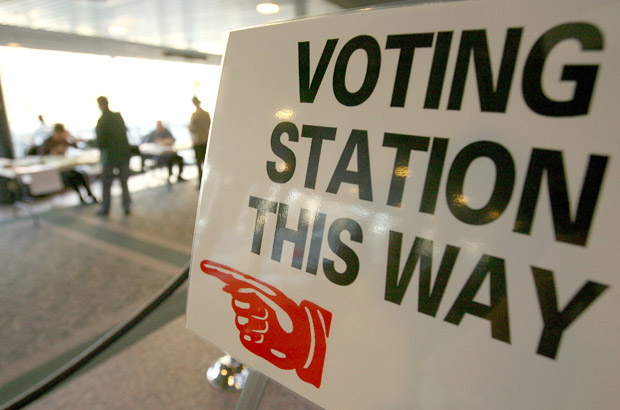OTTAWA – Analysts are calling Ontario’s historically low voter turnout remarkable, unhealthy, depressing and abysmal – and some are wondering how much power a government can yield when so few voters offered support.

Early estimates indicated that 49 per cent of approximately 4.4 million eligible voters cast a ballot in the election, generating the lowest turnout in the 144-year history of Ontario provincial elections.
The 40th general election marked the first time turnout dipped below 50 per cent, according to Elections Ontario records.
“This was certainly very depressing,” said John Meisel, professor emeritus in political science at Queen’s University in Kingston, Ont. “And I think this will, to some extent, undermine and limit the legitimacy of the government.”
Whenever re-minted Premier Dalton McGuinty tries to launch programs and push bills through the legislature, he will likely face opposition and be held down with criticism that most Ontarians didn’t support him, Meisel said.
An associate at the Canada Research Chair in electoral studies also said the low turnout can call to question the authority McGuinty’s Liberals will be able to hold in Queen’s Park.
“If elections don’t have sizeable turnout, people start to question the legitimacy of the elected government,” said Bruce Hicks, noting that low turnouts could lead to governments that don’t reflect the people it represents. “It gets to the point where the only people voting own homes, have higher incomes, have very close ties to the community.”
- Budget 2024 failed to spark ‘political reboot’ for Liberals, polling suggests
- Train goes up in flames while rolling through London, Ont. Here’s what we know
- Peel police chief met Sri Lankan officer a court says ‘participated’ in torture
- Wrong remains sent to ‘exhausted’ Canadian family after death on Cuba vacation
The causes:
Analysts and critics said an infinite amount of blame could be laid on an infinite number of causes for voter turnout, which has been steadily decreasing in Ontario since 1990. Federally, the downward trend started in February 1980, and only reversed on May 2 with a modest jump of about two per cent.
The movement isn’t unique to Canada, Hicks said – it can be seen in countries across the globe.
Election burnout, a feeling that individual votes don’t count, socio-economic problems and lacklustre campaigns are just some of the explanations being floated around in the wake of Ontario’s historic low.
“I think people are just very, very cynical of politics, the style of politics and the content of politics they’ve been given… There are no longer any big projects or any big visions about how to move the country or the province forward in the world,” said Bryan Evans, a political scientist at Ryerson University in Toronto. “Consequently, people don’t see the point.”
The solutions:
The question remains: how can the trend be reversed?
“It’s obviously not through the kinds of measures Elections Ontario made such a fuss about,” said Queen’s political scientist Scott Matthews, pointing to advanced polls that were open longer than usual as an example. “People don’t stay away from the polls because they find it a nuisance. It’s because they’re not interested.”
Reversing the trend depends on the politicians who are running, Matthews said.
“They have to bring up the contentious issues and encourage debate,” he said. “One of the striking things about this election was how little time was spent talking about the fiscal future of the province… That may be a place where Liberals, Conservatives and New Democrats really disagree.”
Electoral reform could work, the analysts said, but they had different ideas of what a new system should look like, especially because Ontario already held a referendum asking whether a reformed system would be supported, and the voters said no.
Australia introduced compulsory voting when turnout dropped below 60 per cent – an option Canada’s former chief electoral officer had on the table until resigning in 2006.
Hicks supports the idea of compulsory voting, but also the ideas of providing a vote-tax credit as an incentive to lower-income Canadians who don’t vote and allowing people to begin voting at a young age.
With a file from Rebecca Lindell



Comments